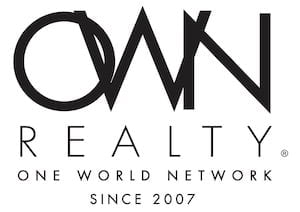1031 Exchange in Maryland
- Home
- 1031 Exchange in Maryland
Considering A Tax Deferred 1031 Exchange in Maryland? We are here to help!
In the realm of real estate transactions, the 1031 exchange stands out as a powerful tool, offering property owners and investors a strategic pathway to navigate the complexities of capital gains taxes. The process, also known as a tax-deferred exchange, allows individuals to sell a qualified property and seamlessly acquire another within a specified timeframe.
Unlike a conventional sale, the 1031 exchange treats the entire transaction as an exchange, providing a unique advantage by deferring capital gains taxes. Under the provisions of US CODE: Title 26, §1031, which governs property exchanges held for productive use or investment, this tax-deferred strategy has gained recognition as a valuable instrument for wealth preservation.
To ensure a successful exchange, understanding the nuances of Section 1031 of the Internal Revenue Code is paramount. The IRS’s interpretation, along with widely accepted standards and compliance guidelines, is delineated in the Like-Kind Exchange Regulations issued by the US Department of the Treasury.
Delving further into the realm of the 1031 exchange in Maryland, it’s essential to comprehend the practical implications and strategic advantages this tax-deferred mechanism offers.
The significance of this exchange is underscored by the potential consequences of neglecting its application, which could lead to the imposition of capital gains taxes on the proceeds from property transactions.
Moving forward in our exploration of wealth preservation strategies, the 1031 exchange in Maryland emerges as a dynamic tool in the investor’s toolkit. Beyond its technicalities, the exchange embodies a strategic approach to navigate the nuances of Maryland’s real estate market while preserving wealth through tax deferment.

For real estate enthusiasts in the vibrant state of Maryland, the 1031 exchange offers a strategic approach to mitigating capital gains taxes, underscoring the importance of delving into its intricacies.
As detailed in Section 1031 of the Internal Revenue Code and further clarified by the Like-Kind Exchange Regulations, this IRS-recognized strategy is a valuable tool for those seeking to defer taxes while transitioning from one property to another.
The significance of a 1031 exchange in Maryland becomes particularly evident when contemplating the acquisition of a “like-kind” replacement property following the sale of an existing investment.
Failure to leverage this tax-deferred option could result in a capital gains tax, currently standing at 15% but potentially escalating to 20% in the future. When executing a 1031 exchange, it’s crucial to factor in both federal and state tax rates applicable to Maryland.
Maryland’s real estate landscape, with its diverse opportunities and market dynamics, makes the 1031 exchange a particularly valuable tool for investors and property owners. As property values fluctuate and markets evolve, the ability to transition seamlessly between investments while deferring tax obligations becomes a strategic advantage.
In the intricate dance of property transactions, the 1031 exchange offers a unique choreography. It transforms the conventional sale and purchase scenario into a synchronized exchange, where the entire transaction is treated as an exchange rather than a straightforward sale. This subtle yet crucial distinction opens the door for taxpayers to qualify for deferred gain treatment, shielding them from immediate tax burdens that accompany regular sales.
Why Consider a 1031 Exchange in Maryland?
The primary motivation for pursuing a 1031 exchange lies in the IRS’s practice of depreciating capital real estate investments at an annual rate of 3% for the duration of ownership.
The tax burden arises when selling the property, with the IRS aiming to tax the depreciated portion as income tax, aligning with the marginal tax rate. For instance, if an investment has been held for 15 years, resulting in a 45% depreciation, the IRS seeks taxes on this 45% at the applicable marginal rate.
Considering the combined state and federal taxes, which might amount to 35%, approximately 15% of the property’s cost becomes payable. This insight becomes pivotal when making informed decisions about property replacement without the protective shield of a 1031 exchange.
One key aspect to consider when contemplating a 1031 exchange in Maryland is the fluid nature of tax rates. The current capital gains tax rate stands at 15%, but there is the looming possibility of an increase to 20% in the future. This potential upward shift emphasizes the timeliness and prudence of engaging in a 1031 exchange to safeguard financial interests.
Furthermore, the understanding of both federal and state tax rates is crucial in the execution of a 1031 exchange. Maryland’s specific tax landscape adds another layer of complexity, necessitating careful consideration of the state’s tax implications.
This nuanced approach ensures that the benefits of the exchange are maximized while aligning with the broader financial objectives of the investor.
The core motivation behind opting for a 1031 exchange lies in the IRS’s depreciation practice, where capital real estate investments are systematically depreciated at a rate of 3% per year.
This depreciation continues for the entire duration of ownership until the property is fully depreciated. Upon the sale of the property, the IRS seeks to tax the depreciated portion as income, applying the marginal tax rate.
Maryland, with its diverse real estate opportunities, presents a compelling backdrop for the application of the 1031 exchange. Investors and property owners stand to benefit from the fluidity it introduces into their investment portfolios. As the real estate market in Maryland evolves, the ability to seamlessly transition between properties without the encumbrance of immediate tax obligations becomes a strategic advantage.

The Significance of a 1031 Exchange:
Central to the appeal of the 1031 exchange is its role in mitigating capital gains taxes. While regular sales expose investors to IRS taxation, the 1031 exchange stands as a shield, deflecting these tax liabilities. The foundational code governing this mechanism, US CODE: Title 26, §1031, specifically addresses the exchange of property held for productive use or investment, carving a clear path for investors to follow.
Considering the fluidity of tax rates, the exchange’s timeliness becomes paramount. The current capital gains tax rate of 15% may escalate to 20% in the future, adding urgency to the decision-making process. Engaging in a 1031 exchange in Maryland now ensures that investors capitalize on the existing tax landscape, providing a financial buffer against potential increases.
Navigating the intricate tax terrain also involves a nuanced understanding of both federal and state tax rates. Maryland’s unique tax dynamics necessitate a careful examination of the state’s tax implications to align the exchange with broader financial objectives effectively.
At its core, the 1031 exchange in Maryland addresses the IRS’s practice of depreciating capital real estate investments at a rate of 3% per year. This depreciation, spanning the entire ownership period, culminates in potential tax obligations upon property sale. The exchange, by deferring these taxes, safeguards a significant portion of the property’s value.
The 1031 exchange in Maryland is not merely a financial transaction but a strategic move in the wealth management playbook. As investors seek to optimize their financial future in Maryland’s dynamic real estate arena, the exchange stands as a reliable ally, offering both protection and growth in the ever-evolving landscape of wealth preservation.
Illustrating this with an example, if an investment has been held for 15 years, resulting in a 45% depreciation, the IRS aims to levy taxes on this 45% at the applicable marginal rate.
Considering the combined state and federal taxes, which may total 35%, approximately 15% of the property’s cost becomes payable. This underscores the critical nature of the 1031 exchange in mitigating tax liabilities and preserving a significant portion of the property’s value.
In conclusion, embracing the strategic advantages of a 1031 exchange in Maryland extends beyond a mere financial transaction. It becomes a pivotal component of a comprehensive wealth preservation plan, allowing investors to navigate the evolving real estate landscape while optimizing tax benefits.
As the dynamics of the market continue to shift, the 1031 exchange stands as a reliable mechanism for those seeking to secure their financial future in the dynamic Maryland real estate arena.
Without the benefits of a 1031 exchange, purchasing a replacement property could diminish your purchasing power to only 70-80% of its previous value. Thus, recognizing the tax advantages and intricacies of a 1031 exchange in Maryland is not just a financial strategy; it’s a crucial component of a comprehensive wealth preservation plan.
Discover Your Path to Wealth Preservation
Power of 1031 Exchanges
Are you ready to embark on a financial journey that could reshape your real estate investments? Look no further! At Sapphire Investment Solutions, we specialize in turning the complex world of 1031 exchanges into a streamlined, wealth-building opportunity.


 Call us today:
Call us today: